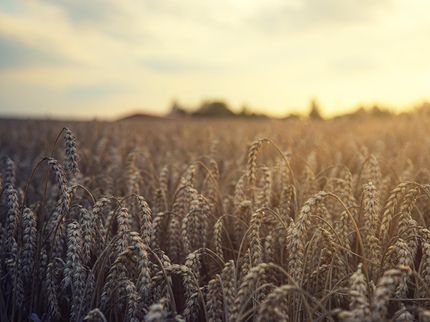First resistance to wheat dwarfing virus discovered
Julius Kühn Institute researchers identify 14 gene loci that could be used to breed new virus-resistant wheat varieties
Advertisement
If the wandering sand cicada (Psammotettix alienus) bites a wheat plant to drink plant sap, the consequences can be fatal: Along with its saliva, the cicada can transmit Wheat Dwarf Virus (WDV). Depending on the age of the plant at the time of infection, yields drop by at least 30 percent, and even total failure is possible. Researchers at the Julius Kühn Institute (JKI) have now tested 500 wheat varieties, including cultivars, genebank accessions and wild species, for their resistance to the virus. The wild varieties were found to be similarly susceptible to the virus as modern varieties, suggesting that breeding has not resulted in a loss of resistance genes. More than half of the varieties studied perished as a result of infection. Two Hungarian varieties described as resistant showed only some quantitative resistance to the virus disease, with infection rates of 21.5 and 34.5 percent. However, the researchers discovered near-complete resistance in the Russian winter wheat variety "Fisht," which was infected at only 5.7 percent. They describe this in their current publication in the open-access journal Frontiers in Plant Science.

Varying degrees of wheat dwarfing virus symptoms in infected plants. The wheat on the far right is symptom-free.
Anne-Kathrin Pfrieme/JKI
However, the JKI's genome-wide association study (GWAS) revealed even more: "For the first time, we were able to determine QTL that were associated with low yield losses due to the virus," explains Anne-Kathrin Pfrieme, who is working on her doctoral thesis on the topic at the JKI's Institute for Resistance Research and Stress Tolerance. QTL (quantitative trait loci) are sections of the genome that are associated with quantitative traits - traits such as height, weight or even disease resistance. These gradually measurable traits are the result of the interaction of different genes. Of the 35 gene loci first identified, 14 remained after testing that could be consistently linked to low yield losses from wheat wilt virus infections. "With the help of genetic markers, these QTL could be crossed into elite wheat lines in the future to produce resistant varieties," says Pfrieme, describing the practical significance of her research findings. The interest of various breeding companies, which were involved in the research together with the Gesellschaft zur Förderung von Pflanzeninnovation e.V. (Society for the Promotion of Plant Innovation), is great, she says, especially since the virus cannot be controlled and no plant protection product is approved within the EU against the cicada that transmits it.
Background
Many cicada and aphid species benefit from climate change because higher temperatures allow them to remain active longer and, in some cases, produce another generation of offspring. This has recently been proven again by a survey with an insect suction trap at the JKI site in Quedlinburg (to the press release). The region of western Saxony-Anhalt is particularly affected by climate change in the form of rising temperatures and drought. Virus diseases transmitted by these vectors are also on the increase.
The wheat dwarfing virus has spread throughout Europe since the middle of the 20th century. In addition to wheat, it also infects barley and other cereals. Today, it is one of the most important cereal diseases in Europe, Asia and Africa. It is transmitted in the fall by adult wandering sand chirps (Psammotettix alienus). Secondary infection by nymphs of the cicada is possible in spring. Infection is manifested by striped coloring of leaves, chlorosis, reduced number of ears, reduced winter hardiness, and death of plants at early stages of development.
Since viruses cannot be controlled with plant protection products and, in some cases, active substances for environmentally compatible use against the vectors are also lacking, the breeding of varieties that are resistant to the pathogens is becoming increasingly important.
Note: This article has been translated using a computer system without human intervention. LUMITOS offers these automatic translations to present a wider range of current news. Since this article has been translated with automatic translation, it is possible that it contains errors in vocabulary, syntax or grammar. The original article in German can be found here.


































































